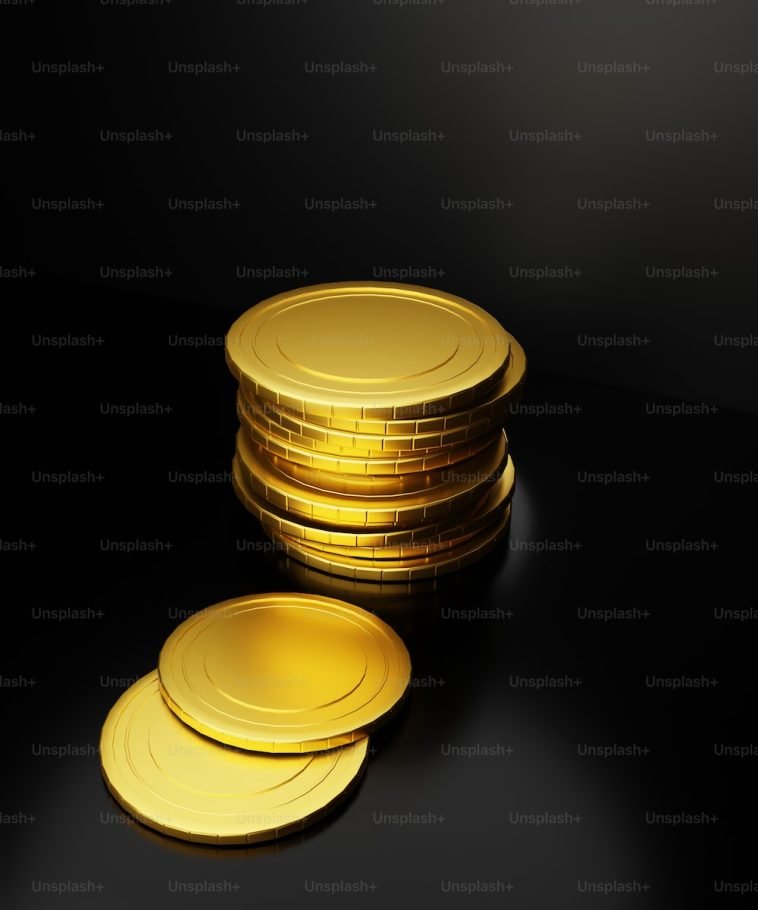Introduction.
Gold ETFs (Exchange-Traded Funds) have gained popularity as an efficient and accessible investment vehicle for those seeking exposure to the price movements of gold.
These financial instruments provide investors with the opportunity to participate in the gold market without physically owning the precious metal.
Understanding how the price of a Gold ETF is calculated is crucial for investors looking to make informed decisions.
In this article, we will explore the factors and mechanisms involved in determining the price of a Gold ETF, shedding light on the processes that drive its value and enable investors to track the performance of gold in the financial markets.
Disclaimer.
Please note that any financial advice provided by me is for informational purposes only and should not be construed as professional financial advice.
Investing involves risk and you should always do your research and consult with a licensed financial advisor before making any investment decisions.
I do not endorse any specific investments and is not responsible for any financial losses or gains that may result from following our advice.
The information provided by me is based on our best knowledge and understanding of the subject matter, but we make no representations or warranties of any kind, express or implied, about the completeness, accuracy, reliability, suitability or availability with respect of the information, products, services, or related graphics contained in any of our responses.
How Is Gold ETF Price Calculated?
Understanding how the price of a Gold ETF is calculated is essential for investors to make informed decisions and effectively track the performance of gold in the financial markets.
In this article, we will delve into the factors and mechanisms involved in determining the price of a Gold ETF, demystifying the calculation process and shedding light on the dynamics that influence its value.
1. Underlying Gold Price.
The primary driver of a Gold ETF’s price is the underlying gold price. Gold, as a globally traded commodity, is subject to market forces such as supply and demand dynamics, geopolitical events, economic indicators, and investor sentiment.
The price of the Gold ETF is designed to closely reflect the price of gold itself. Therefore, any movement in the price of gold will be reflected in the value of the Gold ETF.
2. Net Asset Value (NAV).
The Net Asset Value (NAV) of a Gold ETF plays a significant role in determining its price. The NAV represents the total value of the fund’s underlying assets, which in the case of a Gold ETF, is primarily gold.
The NAV is calculated by dividing the total value of the gold held by the ETF by the total number of outstanding shares.
This calculation provides a per-share value, which serves as a reference point for the market price of the Gold ETF.
3. Creation and Redemption Mechanism.
Gold ETFs employ a creation and redemption mechanism to ensure that the market price of the ETF aligns closely with its underlying assets.
Authorized Participants (APs), typically from large financial institutions, play a crucial role in this process.
When the market demand for the Gold ETF increases, APs can create new shares of the ETF by depositing the required amount of gold with the fund.
Conversely, when demand decreases, APs have the option to redeem shares by returning the ETF shares to the fund in exchange for the equivalent amount of gold.
This creation and redemption mechanism helps maintain the close correlation between the Gold ETF price and the underlying gold price.
4. Trading on Secondary Markets.
Gold ETFs are listed and traded on secondary markets, such as stock exchanges. Similar to other exchange-traded securities, the price of a Gold ETF is influenced by market forces of supply and demand.
Factors such as investor sentiment, trading volumes, and liquidity can impact the price of the ETF in the secondary market.
If the demand for the Gold ETF exceeds its supply, the market price may trade at a premium to its NAV. Conversely, if the supply surpasses the demand, the price may trade at a discount to its NAV.
5. Expense Ratio.
The expense ratio of a Gold ETF also plays a role in its price calculation. The expense ratio represents the annual cost of managing the ETF, including administrative fees, marketing expenses, and other operational costs.
This expense ratio is typically subtracted from the ETF’s NAV, resulting in a slightly lower market price compared to the underlying gold price.
Conclusion.
The price of a Gold ETF is determined by various factors, primarily the underlying gold price, the NAV, the creation and redemption mechanism, secondary market trading dynamics, and the expense ratio.
These factors work in concert to ensure that the price of the Gold ETF closely tracks the performance of gold in the financial markets.
Understanding the calculation process allows investors to make informed decisions and effectively monitor their investments in Gold ETFs, enabling them to participate in the potential benefits of gold as a valuable asset class.






GIPHY App Key not set. Please check settings